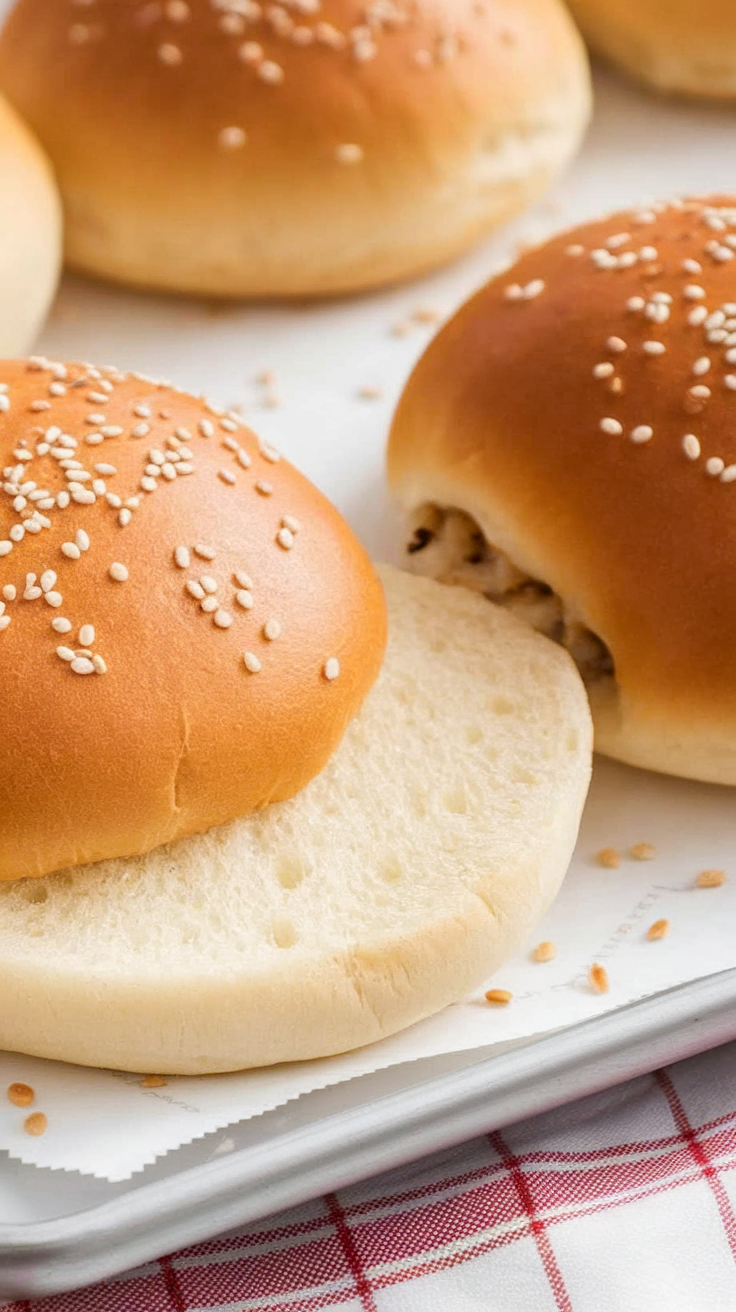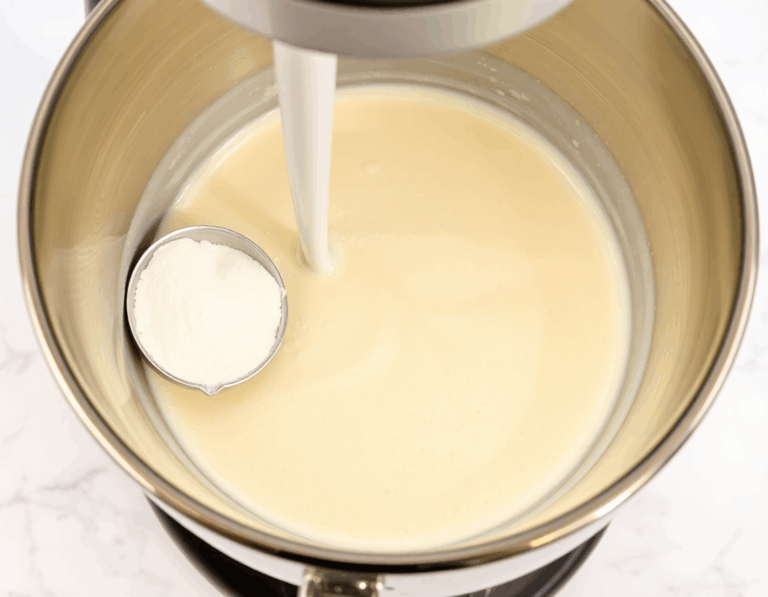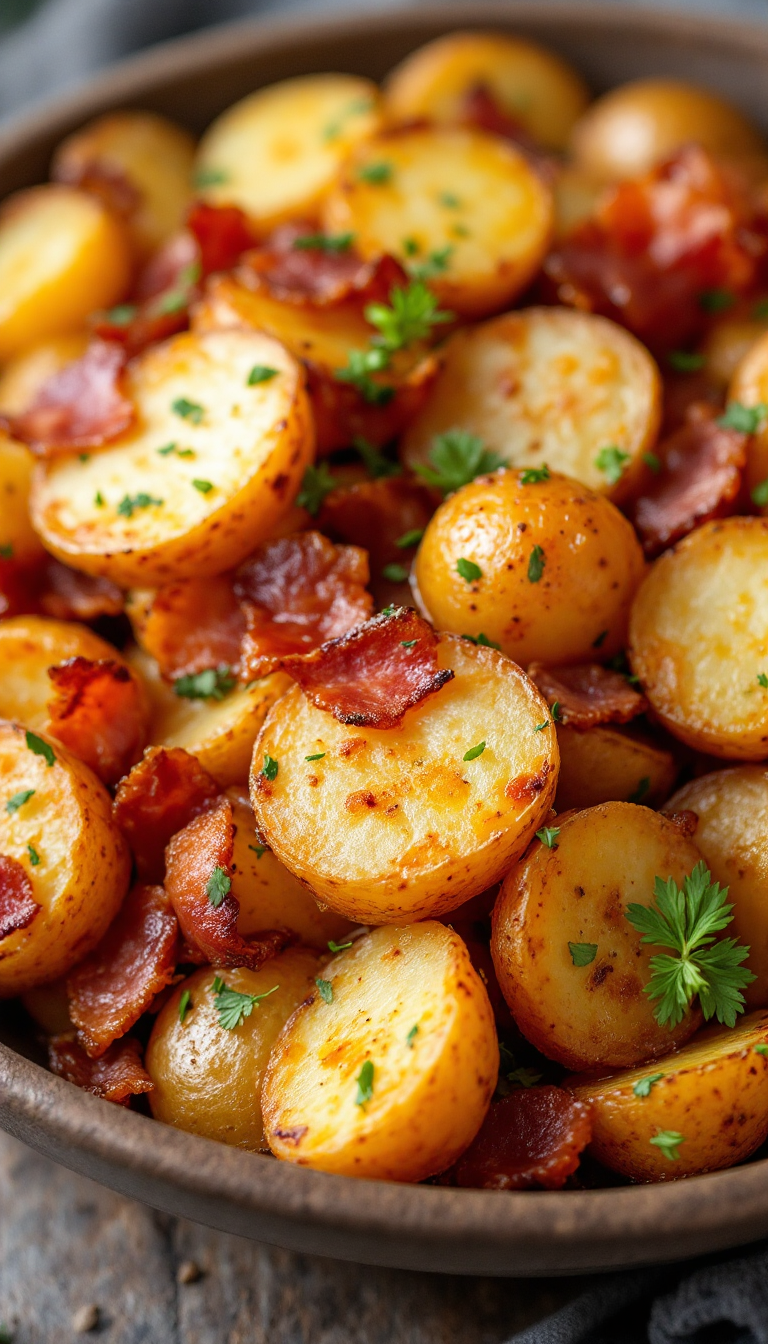The simple joy of biting into a freshly baked hamburger bun – it’s like hugging a cloud, with just a hint of golden crust. I remember when I first made these at home; the aroma alone was enough to make my neighbors knock on my door (or maybe it was just a coincidence, who knows?). Anyway, let’s talk buns—soft, pillowy, and surprisingly easy to whip up.
Cookbook Inspiration
A comprehensive cookbook could offer a variety of bread recipes and techniques to complement your homemade hamburger buns.
Steps
- Activate the yeast by mixing it with 1/2 cup of flour and warm water in a stand mixer bowl until smooth. Allow it to sit for 10-15 minutes until it becomes foamy.
- Incorporate 1 egg, melted butter, sugar, and salt into the yeast mixture. Add the rest of the flour (approximately 3 cups) and mix thoroughly.
- Attach a dough hook to the stand mixer and knead the dough on low speed for about 5-6 minutes until the dough is soft and sticky. If needed, scrape the sides of the bowl and add a bit more flour if the dough clings too much to the spatula.
- Move the dough to a floured work area and shape it into a smooth round ball, tucking the ends underneath. Ensure the dough is elastic and doesn’t stick to your fingers.
- Clean the stand mixer bowl, drizzle it with olive oil, and place the dough inside, turning it to coat with oil. Cover with foil and let it rise in a warm spot until doubled in size, roughly 2 hours.
- Prepare a baking sheet with a silicone mat or parchment paper. Flatten the risen dough on a floured surface into a 5×10-inch rectangle, about 1/2 inch thick.
- Lightly flour the dough if necessary, then divide it into eight equal parts. Shape each piece into a round, tucking ends underneath as before.
- Flatten each dough round into a 1/2-inch-thick disc and arrange them on the prepared baking sheet, spaced about 1/2 inch apart. Lightly dust with flour, cover loosely with plastic wrap, and let rise until doubled, around 1 hour.
- Preheat the oven to 375°F (190°C). In a small bowl, beat the remaining egg with milk and gently brush the tops of the buns without deflating them. Sprinkle with sesame seeds.
- Bake the buns in the preheated oven for 15-17 minutes until they are lightly browned. Allow them to cool completely before tearing them apart and slicing them in half for serving.
Ingredients
- 1 (.25 ounce) package of active dry yeast
- 1 pound all-purpose flour, divided
- 1 cup warm water (105°F/41°C)
- 2 large eggs, divided
- 3 tablespoons melted butter
- 3 tablespoons white sugar
- 1 ¼ teaspoons salt
- 1 teaspoon olive oil
- 1 tablespoon milk
- 1 teaspoon sesame seeds (or as needed)
Nutritional Values
Total Calories: 2336 | Total Fat: 56g | Saturated Fat: 24g | Cholesterol: 464mg | Sodium: 3320mg | Total Carbohydrates: 392g | Dietary Fiber: 16g | Total Sugars: 40g | Protein: 64g | Calcium: 192mg | Iron: 24mg | Potassium: 808mg
FAQ
- Can I store homemade hamburger buns at room temperature?
- Yes, you can store homemade hamburger buns in an airtight container or wrapped in foil at room temperature for up to five days. It’s best to avoid short-term refrigeration as it can dry them out.
- Is it possible to freeze homemade hamburger buns?
- Absolutely, homemade hamburger buns can be frozen. Once cooled, place them in a freezer-safe container and wrap them in a layer of foil. Label with the date and freeze for up to two months. To thaw, let them sit on a paper towel at room temperature and flip halfway through the process.
- What are some popular toppings for homemade hamburger buns?
- A popular choice for topping homemade hamburger buns includes sesame seeds. However, you can also use dried onion, parsley, or poppy seeds for added flavor and texture.
- Why is my dough sticky, and how can I fix it?
- It’s normal for the dough to be soft and sticky. If it becomes too sticky, you can knead in a little more flour until it reaches the desired consistency. However, it’s better to have slightly sticky dough than one that is too dry.
- How can I tell if my dough has risen enough?
- A simple way to check if your dough has risen enough is by gently pressing it with one finger. If the indentation bounces back, the dough is ready. If it stays, it needs more kneading.
Tips
- Test Dough Readiness: To ensure your dough is ready to rise, gently press it with your finger. If it springs back, it’s ready. If the indentation remains, give it a bit more kneading.
- Prevent Drying Out: Avoid refrigerating the buns for short-term storage as it can dry them out. Instead, keep them at room temperature in an airtight container for up to five days.
- Freezing for Later: For longer storage, freeze the buns by placing them in a freezer-safe container wrapped in foil. They can be kept for up to two months. When thawing, use a paper towel to absorb moisture and flip the buns halfway through to ensure even thawing.
- Adding a Personal Touch: Customize the tops of your buns by sprinkling them with your choice of toppings like dried onion, sesame seeds, or poppy seeds before baking.
Equipment

I’m Heather, the founder of Hearty Home Bites, a place where I share my love for delicious, approachable recipes and the joy of gathering around the table. What started as a personal project quickly grew into a trusted resource for home cooks everywhere.




